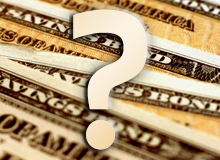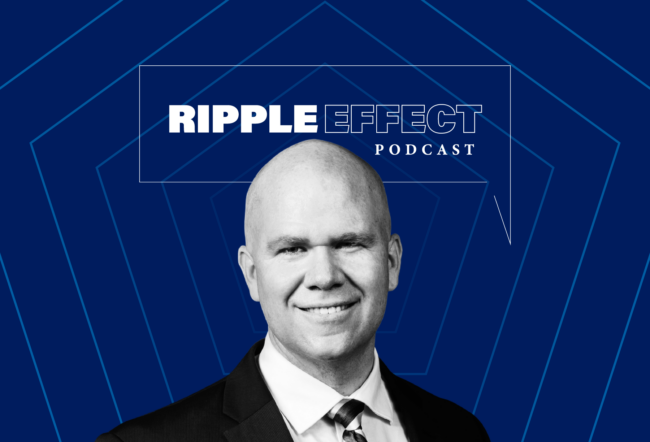Is the great 30-year bull market in bonds coming to an end? Yes, perhaps — or maybe not: It depends on whom you ask and how flexible your timing is.
While many people think of bonds as conservative holdings, they have produced stellar returns for decades, thanks to the taming of inflation and other factors. A basket of stocks would have returned a mere 19% from the start of 2000 through 2011, for example, while a basket of bonds would have returned about 113% through a combination of rising prices and interest earnings.
But many experts say economic recovery could now reverse the process by driving interest rates higher, causing bond prices to fall. Yield on the 10-year U.S. Treasury rose to around 2.25% in March, after hovering around 2% for four months. “I think bonds are less attractive than they have been for a long time,” says Scott Richard, Wharton practice professor of finance.
But rising rates and falling prices are not necessarily coming so soon, according to Wharton finance professor Franklin Allen, who notes that short-term rates in Japan have stayed extraordinarily low for many years. Though the odds favor a rise in rates, strong demand for high-quality bonds, particularly U.S. Treasuries, could persist for some time, he says, keeping prices high and yields low. “I think [Treasuries] are still very much a safe haven, and that’s why interest rates are so low, even though there are many things to worry about.” He adds that there is a chance they will stay low “for a very long time.”
However, according to Wharton finance professor Krista Schwarz, “It’s virtually impossible to forecast future yields. One can talk about risks to the upside and risks to the downside, but both risks always exist.”
From Bull to Bear
Clearly, the U.S. economy is gaining steam, though slowly. Typically, that causes interest rates to rise, which drives bond prices down — turning a bull market into a bear. But the economy has had false starts in the past. Signs were good early in 2011, but progress stalled amid the European debt crisis and the tsunami and earthquake in Japan. Most experts agree that economic signs are even stronger this year, but many warn that progress could be derailed by government debt problems in the U.S. and Europe, rising oil prices and ripple effects from a slowdown in China and other emerging markets. In the U.S., the troubled housing market continues to dampen recovery.
Uncertainty drives investors to pursue safety, which pushes businesses, individuals and foreign governments to stock up on U.S. Treasury securities, the modern world’s safe haven. The Treasury market is big enough to soak up worldwide demand, and safe because it is backed by the government’s power to tax. High demand has driven bond prices up and forced yields to extraordinary lows.
Still, bond market experts point to a simple, undisputed fact: Yields on Treasuries and other highly rated bonds are so low they cannot go much lower. Historically, they have been much higher, and the law of averages says they should rise again. Currently, the 10-year U.S. Treasury note yields a meager 2.25%, down from around 5.25% before the financial crisis struck in 2008. It has not been lower since the 1940s, and has spent most of the past seven decades in the 4% to 8% range, peaking at more than 14% in the early 1980s.
Low interest rates are wonderful for borrowers but tough on individuals who count on interest income from bank accounts and bonds, such as retirees. Rising interest rates can be very hard on investors who already own bonds or bond mutual funds, because they drive down the value of older bonds that pay less, potentially causing substantial losses. A 30-year bond can lose 10% of its value for every one-percentage-point rise in prevailing rates.
Rising rates would also be hard on U.S. taxpayers, who would have to pay more to finance the government’s $15 trillion debt. “When rates rise, the borrowing costs on our deficits are going to rise substantially, and that’s going to restrain the ability of future administrations to do things,” Richard warns. The majority of federal debt matures in less than five years, meaning the government must constantly sell new bonds to pay off old ones, shouldering higher interest costs as rates rise.
The Fed’s Influence
The bond market is extraordinarily diverse and complex, including corporate and municipal bonds as well as Treasuries issued by the U.S. government. But all bonds are loans from the investor to the issuer. Buy a $1,000 bond yielding 4% for 10 years, and you will receive $40 a year in interest and get your $1,000 back after a decade.
Before that maturity date, however, the bond price can fluctuate as market conditions change. If newer bonds yielded only 2%, investors would pay a premium for the older bond that paid 4%. In other words, the older bond’s price would rise until the $40 in annual interest earnings equaled the 2% yield offered by newer bonds — so the bond’s price would rise from $1,000 to $2,000. Price changes due to rate changes are more extreme for bonds with more time to maturity, because the investor would experience the effects longer. Of course, the process also works the other way, with rising rates driving prices down.
While the process is more complicated in real life, and the price changes are generally less extreme than in the above example, this is the principle that produced the great bull market in bonds. Beginning in the early 1980s, the Federal Reserve — first under Paul Volcker and then Alan Greenspan — worked successfully to reduce the annual inflation rate, which peaked at nearly 15% in 1980 and now stands below 3%. The Fed tackled inflation by raising short-term interest rates. That raised borrowing costs, which reduced spending. The resulting drop in demand helped restrict price increases, and inflation fell. Gradually, interest rates were ratcheted down, boosting bond prices.
The Fed’s main tool is its strong influence over short-term interest rates, such as the Fed funds rate that banks charge each other for overnight loans. The Fed does not have as much direct control over long-term rates, which usually are higher because investors demand a premium for the risks they face, such as higher inflation, when they tie their money up for longer periods. But long-term rates are in part a bet on what short-term rates will be in the future, so the Fed’s downward pressure on short-term rates puts downward pressure on long-term ones as well.
Other market forces, such as the demand from investors seeking “safe” holdings, have a strong role in governing long-term rates. And because the market for Treasuries is so large, Treasury yields influence other interest rates, such as those charged by mortgages and corporate and municipal bonds. “Everything moves relative to Treasury rates,” says Richard.
Many experts have criticized Greenspan for continuing the Fed’s low-rate policy early in the 2000s, when he was trying to encourage lending to stimulate the economy after the Internet-stock bubble burst. Low rates, critics say, fueled the lending binge that caused the housing bubble, which burst in 2008, causing the Great Recession. The Fed has maintained its low-rate policy under chairman Ben Bernanke, who took office in 2006. His goal was to encourage lending to spur economic growth. Currently, the Fed funds rate is zero, down from more than 5% before the recession. “This is the first time in the post-war period that we have had the Fed funds rate at zero,” Richard notes.
Other Treasury yields are also at near-record lows. Even the 30-year U.S. Treasury bond yields only 3.3%, despite the premium that investors demand for tying their money up for so long. Low-rate policy has driven the standard 30-year fixed-rate mortgage down to about 4%, from over 6% before the recession. Interest earnings on bank savings are near zero.
To further stimulate the economy, the Fed has resorted to trying to reduce long-term rates by purchasing long-term bonds, which increases demand and raises prices, but this is only moderately effective, Richard says. “I believe Bernanke kept us from going into a deeper recession, or even a depression,” he adds. “The Fed acted in an excellent way, in my opinion…. [Bernanke] has responded with every bit of artillery that he has, and he just doesn’t have any more. Another round of easing won’t do any good.”
The Fed’s problem — running out of ways to stimulate the economy — means Treasury yields have effectively hit bottom, or come so close that, in the long run, the odds of dropping further appear to be vastly outweighed by the odds of going up. “Mathematically, you would expect that they would go up, since they are at all-time lows,” Allen notes.
When Rates Rise
If the economy strengthens, the Fed may someday become more concerned about inflation and start nudging interest rates up to cool growth. Bernanke has said this will not happen until late 2014 at the earliest, but some experts think the economy will start growing fast enough to force his hand sooner.
“The key factor that could cause Treasury yields to rise is an improving economic outlook,” Schwarz says. “This would work in two ways. First, it would bring forward the time of possible tightening of monetary policy by the Fed. Second, investors would be willing to buy riskier assets, pushing Treasury yields higher as investors shift out of Treasuries and into these other assets. Indeed, this is precisely what has been happening so far this spring.” But economic problems, or a dip in inflation below the Fed’s 2% target rate, could put the Fed back into a rate-cutting mode, Schwarz adds. “And if things in Europe take another turn for the worse, or there are some other strains on global markets, then this would cause safe haven flows into Treasuries, supporting prices and bringing yields lower.”
What would the world look like if rates did start to rise? Borrowing costs would probably go up, making it more expensive to buy things like homes, cars and appliances. Yields would probably rise on interest-bearing accounts, such as bank savings and money-market funds. That would be good for savers, assuming the gains were not devoured by higher inflation. But bond investors could be hit hard, analysts note, as higher yields on new bonds would drive down values of older, stingier bonds already in investors’ portfolios. The great bull market could turn into a great bear market.
If this happened, an investor who owned an individual bond would face an unpleasant choice: sell at a loss to reinvest for a higher yield, or continue receiving a below-market yield by keeping the bond to maturity, when the bond would be redeemed at full face value. Either way, the investor who owns a bond when yields rise would be worse off than one who had stayed in cash. The cash holder, having avoided the price drop, could then buy a new bond with a higher yield.
The problem is particularly difficult for people who invest in bonds through mutual funds. Because funds constantly replace the bonds they hold to maintain the average maturity promised to investors, the fund itself has no fixed maturity date — maturity is always five years from the present, for example. If rates rise, the fund will likely sell some bonds at a loss, and see the ones it retains fall in price, causing a drop in the fund’s share price. Over time, the higher yields earned by newer bonds added to the fund will help repair the damage, but there’s no escaping the fact that a sharp rise in interest rates could cause deep losses for many bond fund investors. Unlike owners of individual bonds, fund investors cannot simply wait for the maturity date to redeem at full value.
Many experts are warning that bonds — and bond funds — are riskier than they have been in recent decades. The risk can be reduced by owning bonds and funds with shorter maturities, since those holdings would suffer less from rising rates: Even if rates were to double or triple overnight, a $1,000 bond maturing the next day would still be worth $1,000, while a bond that wouldn’t mature for 10, 20 or 30 years would collapse in value.
Unfortunately, bonds and funds with shorter maturities, while mitigating the problem of interest-rate risk, currently offer very low yields. An investor who took the short-maturity route would regret it if yields did not rise. And that does remain a possibility, Allen says, arguing that persistent economic problems around the world could fuel high demand for Treasuries and other highly rated bonds for years, keeping rates low.
Flock to Stocks?
If economic conditions improve and bonds seem too risky, investors may turn to stocks, which have done well in recent years. Princeton economist Burton G. Malkiel, author of A Random Walk Down Wall Street, argued in a recent editorial piece in The Wall Street Journal that stocks are a safer choice now than bonds. “Bonds are the worst asset class for investors,” he wrote. “Usually thought of as the safest of investments, they are anything but safe today. At a yield of 2.25%, the 10-year U.S. Treasury note is a sure loser.” After inflation took its share, that bond would effectively yield nothing, he added.
If investors follow Malkiel’s advice, a flood of money to stocks from bonds would undermine bond prices by reducing demand.
For small investors, bonds could continue to provide diversification in the portfolio, one of the chief reasons for owning them, and bond losses, if there were any, could be offset by stock gains. Many experts say nervous investors can reduce their bond holdings, but eliminating them entirely could actually add risk by putting more eggs in the basket of stocks.
Allen points out that there are many potential economic problems that could undermine stocks and make bonds a safe haven. “I think [bonds] are still a good place to have a chunk” of the portfolio, he says.



